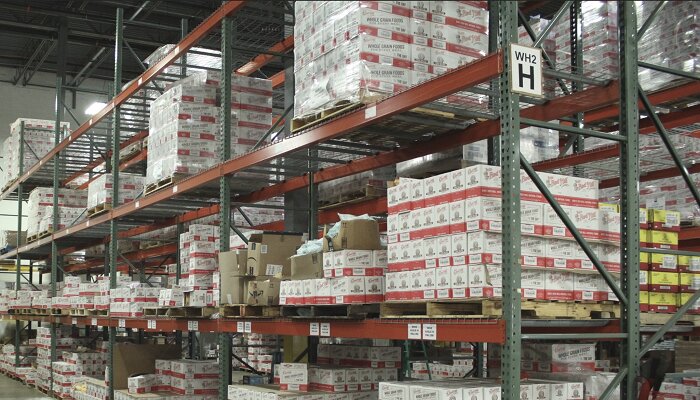9 Best Practices for Safe Construction Storage
When you run a business in the construction industry, one critical factor you need to consider is how you will safely store your materials. Whether it is bricks, chemicals, glass, metal, or lumber, various temperature-sensitive, potentially dangerous, and heavy-duty materials will need to be properly protected, not just from breakages, explosions, or human injury but […] The post 9 Best Practices for Safe Construction Storage appeared first on World Construction Today.

When you run a business in the construction industry, one critical factor you need to consider is how you will safely store your materials.
Whether it is bricks, chemicals, glass, metal, or lumber, various temperature-sensitive, potentially dangerous, and heavy-duty materials will need to be properly protected, not just from breakages, explosions, or human injury but also from the risk of theft.
Thankfully, there are several things you can do to ensure you store these various materials on your construction site in a manner that keeps them out of harm’s way.
Here are 9 of the very best practices your company should embrace.
1. Carefully choose your storage area
If you handle and store your construction equipment and materials poorly, it will seriously affect their quality. Therefore, to avoid any damage to your construction materials, you must protect all of them appropriately.
To do this, you will need to take several things into account, not least the weather. Certain items, such as cement or steel, will spoil if exposed to rainwater. Likewise, hardwood flooring, textiles, vinyl siding, and roofing shingles can all be compromised if directly exposed to the sun.
For this reason, you should take the time to sort the materials out into different categories and carefully designate the best storage areas for them.
2. Gas cylinder storage
You might not be aware of this, but gas bottles must be stored in a specific way that complies with local standards. This reduces risks like airborne cylinders and potentially harmful gas leaks.
If you have these types of bottles on site, gas cylinder storage units are the most sensible and appropriate solution. They provide a naturally ventilated and secure enclosure in which they can safely reside.
3. Use specialised racks
As a rule of thumb, construction materials tend to be kept on specialised racks, which are safeguarded by blocking, stacking, and linking them. This technique reduces the risk of them falling, slipping, or otherwise collapsing.
It is important to ensure that your materials are stored on the rack most appropriate to their form. For instance, if you pile up bags of cement on sheet-glass storage or weak plywood, the chances are they won’t last long.
Subsequently, you will need to take the time to pick the most suitable storage rack for each material you keep in your facility.
4. Do not stack barrels, kegs or drums
Although it’s tempting to store containers like drums, kegs, or barrels on top of each other to save space, it is not advisable. There is too much risk that they will become damaged, unstable, or spring into a leak, which could cause major inconvenience and significant issues.
A better option is to use wooden boards or pallets to separate each tier. This should make them much steadier overall.
5. Put up clear and very noticeable signage
Wherever you store your construction materials, it is important to make everyone aware of it through prominent signage.
It should advise any safety instructions people need to follow, provide relevant warnings and also relate advice such as where the nearest fire equipment is, emergency contact information and vital site amenities such as first aid.
The more visible your signs, the less likely your staff will experience accidents or issues onsite.
6. Use the correct handling equipment
When storing construction items, it is important to use the correct tools, machinery, or handling equipment because otherwise, your workforce could be injured.
Depending on what and where you are storing building materials, this could involve using carts, dollies, forklifts, trucks or hoists. Just make sure what you use is in line with the proper guidelines for workplace health and safety.
7. Know the weight limits of each material
All materials have a weight limit, so it is important to know what the limits are for each type. If you don’t, you could face a range of issues that can negatively impact your business.
It is a good idea to choose solid steel racks with very high weight limitations. Even then, it is important not to succumb to the temptation to exceed the restriction.
8. Provide staff with full training
One of the most obvious ways to ensure best practices for safe construction storage is to fully train your staff on them.
It is up to companies to ensure their workers are up-to-date with the latest training and safety protocols because if they don’t, it can result in accidents, injuries or poor decisions, which could have serious implications for the health and safety of the people on site.
9. Make sure your storage site is secure
You must protect your business from the potential for damage or injury and the risk of theft.
Construction materials can be worth a lot of money, which can make your storage areas a target for thieves.
For this reason, it is important to have strong safety measures in place to counter robbery, which could otherwise cost your business thousands of dollars.
The post 9 Best Practices for Safe Construction Storage appeared first on World Construction Today.

 machineryasia
machineryasia 




